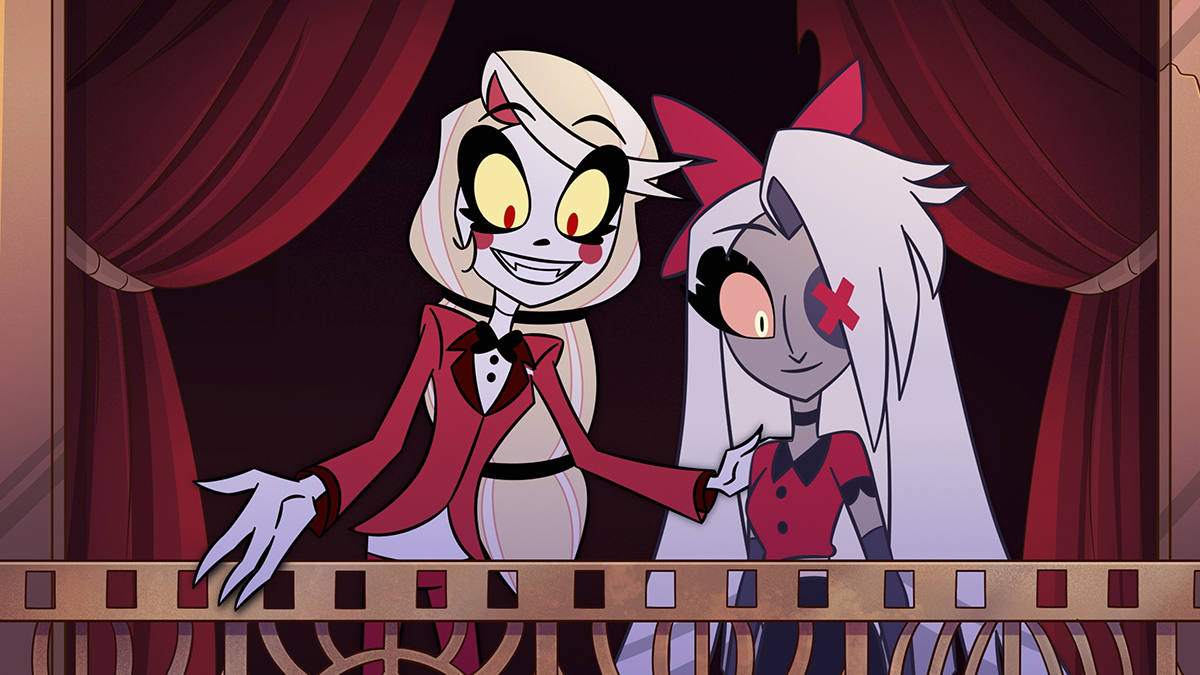‘Hazbin Hotel’ Creator Vivienne Medrano Says Some Season 2 Fan Theories “Nailed It”

Last fall, the Prime Video animated series Hazbin Hotel season 1 ended with a climactic battle and a massive reveal. Now, fans are eagerly awaiting season 2—even though it doesn’t have a release date yet.
We sat down with series creator Vivienne Medrano at San Diego Comic-Con 2024 to talk about Charlie Morningstar’s complicated relationship with her parents, which artists have influenced Medrano the most, and fan theories about season 2 that are either right on the money … or hilariously off base.
This interview has been edited for length and clarity.
One of my favorite moments in season 1 is when Alastor tries to step in as a surrogate father for Charlie. How did you develop the themes of fatherhood, motherhood, and parenting in Hazbin Hotel?
The relationship between Charlie and her parents is a huge part of the show. Obviously, I can’t get super deep into it because there are a lot of reveals and twists and turns with her family, but [thanks to her family dynamic] we learn why she believes in the hotel and all these things in the first place.
Her mother’s a big mystery, but when it comes to her dad, I’ve always resonated with the idea of flawed parents because, in my opinion, there really isn’t such a thing as a perfect parent. It’s such a hard thing to do, and it’s challenging because every child is different. I feel like with me, I got really lucky because I have a good relationship with my parents, but they went through a very, very messy divorce. I think it’s always resonated with me that parents can mess up, but at the end of the day, they love you, they’re doing their best, and they’re good people. What I love about Charlie’s relationship with Lucifer is that he loves her and wants to do his best. He just doesn’t quite know how.
Let’s talk about Lucifer! He’s such an interesting character, with so many layers. How did you take the figure of Lucifer from folklore and myth and turn him into this specific character?
It was really fun! I took the original Biblical description of Lucifer as the most beautiful angel, but the one that became arrogant and wanted to give humanity free will. And I posed it a little more sympathetically. I wanted to make him almost a fictitious version of P.T. Barnum—this person who wanted to do fantastical things and share the magic of free will with humanity. And his whole purpose is that he’s trying to do his best and trying to be really imaginative and whimsical, kind of like a ringleader, but he’s ultimately punished for it. And now he’s kind of jaded.
Speaking of character design, all the sinners and demons of Hell have very distinctive designs. What was your process for the visual design of the series?
A lot of it is self-indulgent! I’ve been designing monsters and villains my whole life. I put sharp teeth, sharp angles, and gangly silhouettes into these characters because I just think that’s fun. I grew up as a big fan of The Nightmare Before Christmas, which has these very iconic designs that have always had a big influence on me. I also really like [Batman: The Animated Series animator] Bruce Timm’s style and how his villains have these really cool, amazing shapes. So I put a lot of that kind of shape language into my work.
Aside from Tim Burton and Bruce Timm, who would you say your major influences are?
I often joke that if you put Bruce Timm, Tim Burton, Jhonen Vasquez, Disney, and Warner Bros. in a blender, you’d get my style.
It’s funny—you don’t hear much about Jhonen Vasquez these days, but he’s had such an impact on comics and animation.
Yeah. I was a massive fan of Invader Zim as a kid. I think it’s still my number one kid’s cartoon. I adore it, and it still holds up to this day. I actually work very closely with Richard Steven Horvitz, who’s the voice of Zim, so it’s always going to be a special show to me. [Note: Horvitz voices Moxxie on Medrano’s web series, Helluva Boss.]
What place do you think that kind of darker, edgier stuff has in the broader animation landscape?
I think there’s a lot of appetite for it right now because a lot of people grew up with it. I think it’s resonating with people my age because they’re also Invader Zim kids. And also think that the more sanitized things become, the more you want something that breaks the mold. My show is also a musical, so it’s kind of something for theatre nerds who want to embrace their edgy, flawed queerness.
You’re currently working on season 2, and I know you can’t get spoilery, but have you been keeping up with the fan theories online?
The most I can say is that there are so many theories, but I’ve seen somebody get it right. Obviously, I won’t mention who or what, but I see some of them and I think, ‘people nailed it!’ But that means we set it up well. I’m so excited for people to actually see those things manifest. I’ve also seen theories that are wildly off, and those are hilarious.
Have a tip we should know? tips@themarysue.com